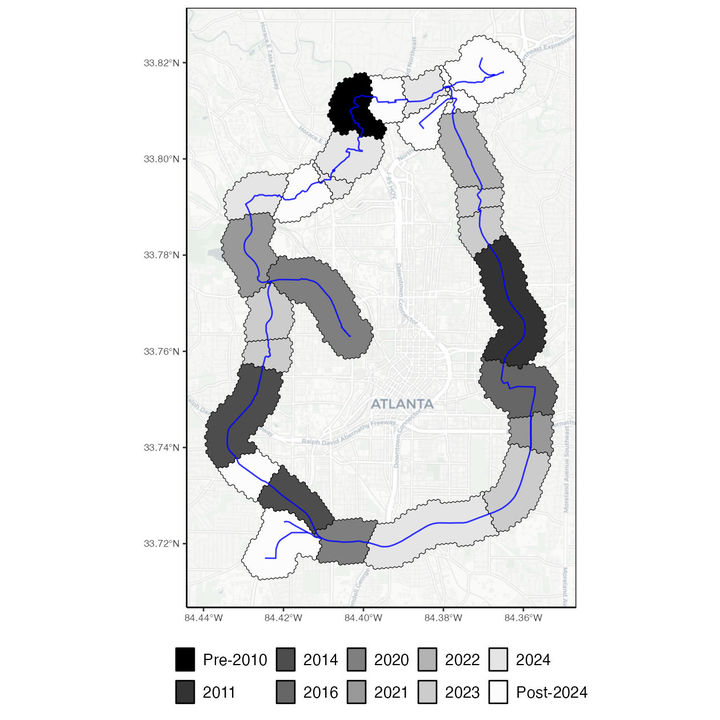
Abstract
Purpose- The Atlanta Beltline is a 22-mile urban trail and greenspace network. This large-scale urban redevelopment project aims to create a vibrant public space. This study evaluates its impact on neighborhood crime. Methods- We employ a staggered difference-in-differences design using geocoded crime incident data from 2009 to 2024 and trail segment-level treatment timing. Our primary analysis uses 500-meter (0.31-mile) buffers around the Beltline and compares treated areas to not-yet-treated segments, controlling for unit and year fixed effects. We also test robustness using alternative estimators, spatial bandwidths, and subgroup analyses by land use and infrastructure features. Results- The Beltline’s construction is associated with a 5.8% reduction in overall index crime, driven primarily by decreases in robbery (-34.9%) and burglary (-11.3%). The effects are more pronounced in areas with higher residential density and greater access to public transit. No consistent evidence is found for crime displacement or increases in other offense types. Conclusion- Our findings suggest that urban greenways, such as the Atlanta Beltline, can reduce crime when embedded in conducive neighborhood environments. The results have implications for urban redevelopment planning, underscoring the importance of local context in shaping the crime-related outcomes of green infrastructure projects.